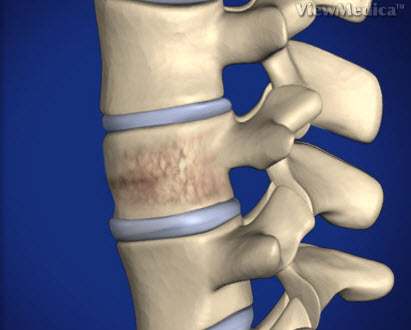Discography

What is Discography?
Discography is a diagnostic test used to determine whether the source of back or neck pain is a damaged disc and which disc is causing the pain. This is accomplished by pressurizing one or more discs.
Who needs Discography?
Pain management practitioners and other specialists may use discography to help in forming a treatment plan. Discography may also be performed prior to a surgical operation in order to confirm the affected disc. Usually, the procedure takes under an hour to complete.
What are the steps in Discography?
Preparation
Once the patient is positioned on a special fluoroscopic table, an IV is inserted to intravenously give the patient antibiotics and medicine for relaxation. Because it's important to describe sensations felt during the procedure, the patient remains conscious. Local anesthesia is administered to numb skin and tissue over the discs being tested.
Insertion of Guide Needles
Once anesthesia has been applied, your doctor will use the X-ray images provided by the fluoroscopic table to carefully insert a guide needle through to the annulus fibrosus, the outer layer of the disc to be tested. A smaller needle is inserted through the guide and into the disc's center. If more than one disc is being tested, this step is repeated.
Testing the Discs
The doctor then injects a contrast dye into the disc's center, pressurizing it. The patient is asked about any sensations felt upon the injection. Sensations of pressure without pain are usually signs of a normal, healthy disk. Sensations of pain are usually signs of a damaged or degenerated disc. If pain is felt upon the disc being pressurized, your doctor will ask you to compare it to the pain you usually feel in order to help confirm the disc as a pain source.
Removal of Needles
X-ray images are captured with the use of the fluoroscopic table after each disc is tested. All needles are then removed, and bandages are applied.
After Discography
After this procedure, your doctor may also have a CT scan performed. This additional imaging test may be done to gather further diagnostic images of your discs in order to determine the best course of treatment. Often, patients will experience soreness for a few days after the procedure. Your doctor may advise taking ibuprofen or acetaminophen and icing the area several minutes a day to help treat the soreness.
